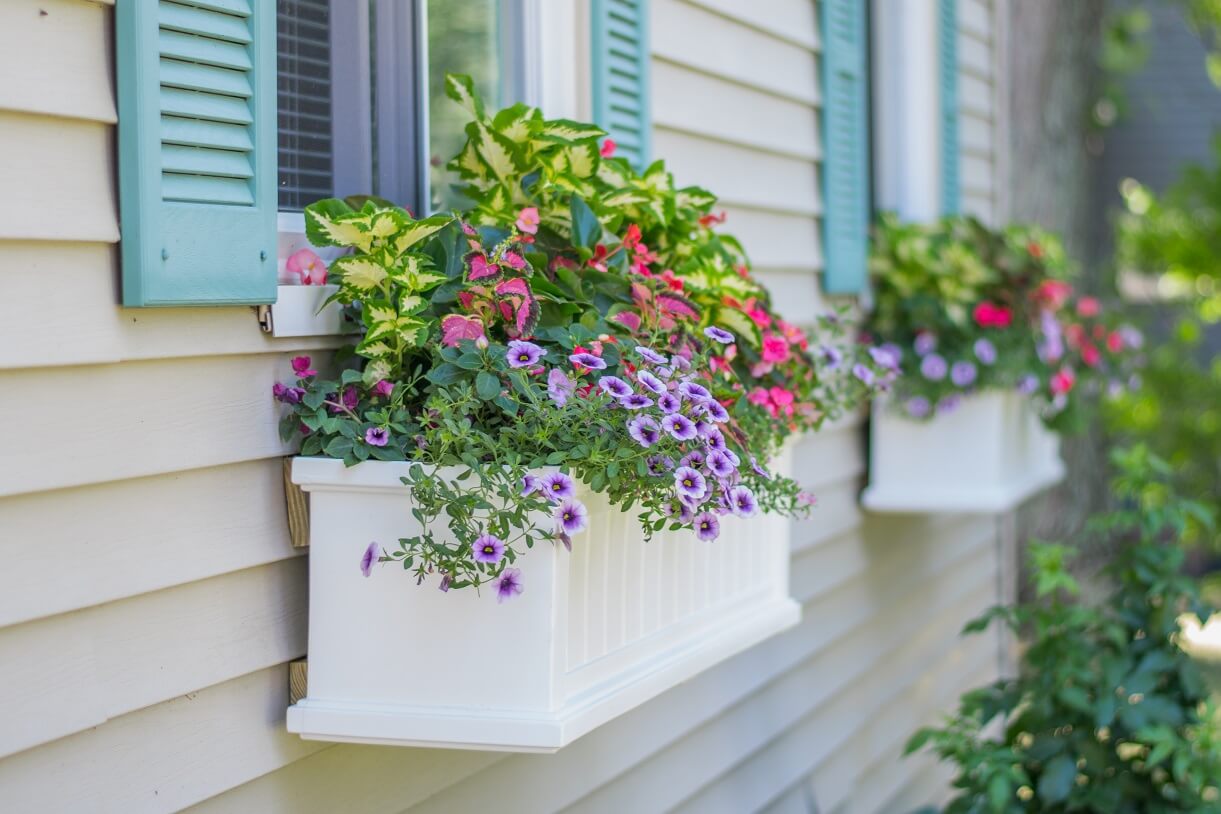The plants can be placed on the windowsill and shelves, on plant stand, tiered tables, plant trolley, or planters. The permanent planters should have proper drainage. Various types of window boxes, fiberglass/pottery/iron boxes, cast cement and asbestos boxes, plastic/wooden boxes, etc. can be used for gardening. Plants are grown in good quality potting soil with rich compost.
Click here to buy window planters online in India.

Right Type of Plants for Window Gardening:
Window gardening is a timeless trend and with the rise in the number of high rises blocking skylight into urban homes, window gardening is making a comeback. Depending on the side your window is facing there is a plethora of plants that can find a place there. Window gardening is not only about having plants on the window sill but having them in hanging planters on curtain rods or on floor around the window area.
Plants are a great way to decorate window sills, whether thin or broad, with quirky planters and plants of varying plant shapes. Thin window ledges, that have other wise no use from a décor perspective can be converted into a greenspace with appropriately sized planters that stack together. If the window sill is broader, plant groupings can be created to achieve a desired look.
Window gardening does not only refer to placing plants on the inside of the window (inside homes) but also in window boxes outside homes. While there can still be a size restrictions of plant sizes on the inside, plants in window boxes have no such restrictions. The plant options for window boxes is also wider because of better light and growing conditions. Based on the direction of the windows, window boxes can have anything from foliage plants, flower beds, or vegetable gardens.

Plant Care for Window Plants
Plant care for window plants is not so different from any other plant care. The light on windows is different from any other indoor space, which affects the watering frequency. More light directly translates to better rate of photosynthesis that means higher water requirements. If the windows are openable then the air draft dries out the leaves quicker and they may require misting more frequently.
Plants vs Windows
When its time to decide what plant to place on which window, there are some basic rules to be followed. South and West facing windows are the best choice for sun loving plants, flowering and fruiting plants and also herbs. If your South and West facing window sills are narrow, then succulents are your best choice. North facing windows receive the least amount of sunlight and almost no direct light, making them the ideal direction for foliage plants like fern and Calathea that don't like any direct sun. The east facing windows are great for the widest range of plants, other than fruiting plants. The east facing windows receive just the adequate amount of morning sun for a healthy garden space.

1. Plants for North Window:
- Aglaonema
- Araucaria
- Bromeliads
- Chlorophytum - Spider Plant
- Dieffenbachia
- Ferns
- Hedera
- Zebrina Pendula
- Perennial Balsam
- Monstera deliciosa
- Peperomia
- Philodendron
- Sansevieria

2. Plants for the South or West Window:
- Acalypha
- Amaryllis lily
- Beloperone guttata
- Cactii & Succulents
- Chrysanthemum
- Lantana sellowiana
- Lilium longiflorum
- Geranium
- Poinsettia
- Coleus
- Cissus
- Miniature roses
- Dwarf bougainvillea
- Hibiscus grafts

3. Plants for East Window:
- Anthurium
- Caladium
- Dracaena
- Palms
- Pandanus
- Lemongrass
- Tulsi
- Jasmines (Mogra)
- Kari Patta (Curry leaves)
- Brahma Kamal (Epiphyllum)
- Green Chilli
- Basil
- Periwinkle
- Mint/Pudina

Plants varying widely in their water requirement should not be grown in the same window box. Cactus cannot be grown along with flowering annuals such as phlox which will need more frequent watering than the former. This problem can be overcome to some extent by growing plants in individual pots and later placing them in a box.
Further Reading: Top 5 Plants Grown in Indian Home Gardens!
Lets Ugaoo!








